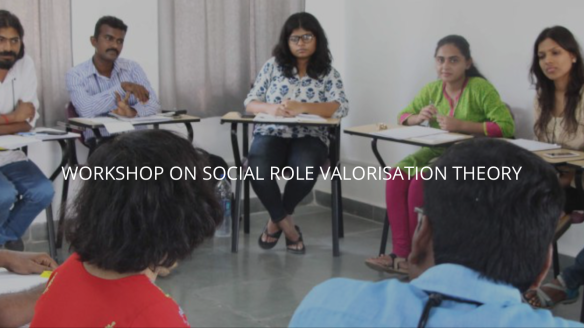Into my news feed this morning came this video, describing the development of a playground in the midst of New York City full of potentially perilous materials such as hammers, nails, saws, and……well….. junk. To add insult to injury, parents are forbidden to enter. Hard to imagine in this western world of liability, and equally hard in the global South’s world of fiercely protective parents. And yet, research and study tells us there are important and in fact essential benefits to risk that make it worth a closer look.
The article reminded me of a number of things. I live near a mostly Amish community, a faith group that has chosen to reject much of technology as a means to preserve the strength of their community and their religious focus. Although my family is not Amish, we live closely alongside many such families.
Man y if not most Amish families are farmers, and very good farmers at that .It always amazes me to see children as young as 4 years old on the roads, unsupervised, with the reins in their hands as they drive their ‘pony carts’ while cars whiz by at high speeds. One could criticize, or at least wince thinking of the danger, but one cannot deny the competencies that are developed from taking such risks.
y if not most Amish families are farmers, and very good farmers at that .It always amazes me to see children as young as 4 years old on the roads, unsupervised, with the reins in their hands as they drive their ‘pony carts’ while cars whiz by at high speeds. One could criticize, or at least wince thinking of the danger, but one cannot deny the competencies that are developed from taking such risks.
For people made vulnerable by the impact of disability, protection and ‘safeguarding against risk’ matter a great deal. In fact, in Social Role Valorization principles, we often teach about the need to ‘bend over backwards’ to compensate for vulnerability. No wonder, with our study and understanding of the wounds of brutalization and death-making. Today, though, I am reflecting on the benefits of risk-taking, and how reasonable risk helps us all gain so many competencies. I believe the concept of the dignity of risk was first described by Robert Perske in 1972,

Robert Perske (1927-2016)
about the same time when Wolfensberger’s conceptualization of ‘Normalization’ was sweeping the western world. It is a peculiar thing that the western institutions, and the ones I see in India as well, are such a mix of perilous and overprotective, at the very same time. Perske reminded us that overprotective can also be perilous, as people are likely to be sheltered from life’s most important lessons, remain dependent (and devalued) and not get the chances for those ‘healthy stretches’ that cause as to grow in leaps and bounds, gain confidence, and help convince others that we can do, can be, and can become. Unfortunately, the dignity of risk also can be used as a weapon, as when people get hurt or harmed and others say, “their choice, their fault”.
I think the balance between over-protection and under-protection sits at a particularly nuanced intersection for each person, and in all different life areas. Finding that sweet spot is a part of helping a person to grow and develop. Missing it is to miss a prime developmental opportunity. The famous Russian psychologist Lev Vygotsky first

Dr. Lev Vigotsky (1896-1934)
described this area with the intimidating phrase, “the zone of proximal development”, but we can understand it as the tension point of PUSH where just the right amount of risk will allow the person to burst into the next level of learning and growth.
So, there’s a rambling group of morning thoughts about not only the scary side of risking, and the great need for us to know people well enough to help find that sweet spot where failure is not disaster, but where the push point for growth is identified and allowed to be pressed.
References:
Perske, R. (1972). The dignity of risk and the MR. Mental Retardation, 10(1), 24.
Vygotsky, L. (1987). Zone of proximal development. Mind in society: The development of higher psychological processes, 5291, 157.Wolfensberger, W. P., Nirje, B., Olshansky, S.,
Wolfensberger, W. P., Nirje, B., Olshansky, S., Perske, R., & Roos, P. (1972). The principle of normalization in human services.



 Worldwide, the global pandemic has impacted human lives in many ways, and the impact on communities is being considered and analyzed even as it unfolds. One thing we do know, the Corona virus illness itself has its impact, the response to curtail and control it has different impact, and our own personal and collective fears and anxieties also create circumstances that we can see and feel.
Worldwide, the global pandemic has impacted human lives in many ways, and the impact on communities is being considered and analyzed even as it unfolds. One thing we do know, the Corona virus illness itself has its impact, the response to curtail and control it has different impact, and our own personal and collective fears and anxieties also create circumstances that we can see and feel. ization across India often find our SRV lens gives us insight into the multiple jeopardies faced by groups of people made vulnerable by society, economics and geography, and gives us a good handle on societal dynamics that work to uplift people, or drag them down. 60 of us – people with lived experience of disability, their family members, and professionals alike – gathered together in 3 different study sessions to give voice to what we are noticing around us.
ization across India often find our SRV lens gives us insight into the multiple jeopardies faced by groups of people made vulnerable by society, economics and geography, and gives us a good handle on societal dynamics that work to uplift people, or drag them down. 60 of us – people with lived experience of disability, their family members, and professionals alike – gathered together in 3 different study sessions to give voice to what we are noticing around us.























 y if not most Amish families are farmers, and very good farmers at that .It always amazes me to see children as young as 4 years old on the roads, unsupervised, with the reins in their hands as they drive their ‘pony carts’ while cars whiz by at high speeds. One could criticize, or at least wince thinking of the danger, but one cannot deny the competencies that are developed from taking such risks.
y if not most Amish families are farmers, and very good farmers at that .It always amazes me to see children as young as 4 years old on the roads, unsupervised, with the reins in their hands as they drive their ‘pony carts’ while cars whiz by at high speeds. One could criticize, or at least wince thinking of the danger, but one cannot deny the competencies that are developed from taking such risks.

 Metaphors have great power to shape our mindsets, govern our ideas, and make things crystal clear. Today, I was in a forum to discuss the strength of a movement. The metaphor of a “foundation for inclusion of people with disability” was used, and we all immediately identified with it. Every building needs a firm foundation, made of solid concrete, or strong steel sunk deep in the ground. Otherwise, we are a house built on stilts, easily swayed by a change in the weather. Good metaphor, indeed.
Metaphors have great power to shape our mindsets, govern our ideas, and make things crystal clear. Today, I was in a forum to discuss the strength of a movement. The metaphor of a “foundation for inclusion of people with disability” was used, and we all immediately identified with it. Every building needs a firm foundation, made of solid concrete, or strong steel sunk deep in the ground. Otherwise, we are a house built on stilts, easily swayed by a change in the weather. Good metaphor, indeed.
 components –policies, program models, rules, standard operating procedures, staff commitment, effective procedures…beneath sits an unseen mountain of commitments to people, values, depthful understanding, sense of purpose, history, biases, passion, world views, spiritual and societal beliefs, and desire for change. The tip is easy to formulate – just find the right model, develop the right protocol, replicate a ‘best practice’, determine the proper quality indicators, write the standards for inclusion.
components –policies, program models, rules, standard operating procedures, staff commitment, effective procedures…beneath sits an unseen mountain of commitments to people, values, depthful understanding, sense of purpose, history, biases, passion, world views, spiritual and societal beliefs, and desire for change. The tip is easy to formulate – just find the right model, develop the right protocol, replicate a ‘best practice’, determine the proper quality indicators, write the standards for inclusion.














